8 cyclists are drug tested at the Tour de France every day - here's what happens
Before each stage of the Tour finishes, an official from the Cycling Anti-Doping Foundation (CADF) posts a list of riders' numbers near the finish line.

The riders' names are not printed on the list but their race numbers and team names are.
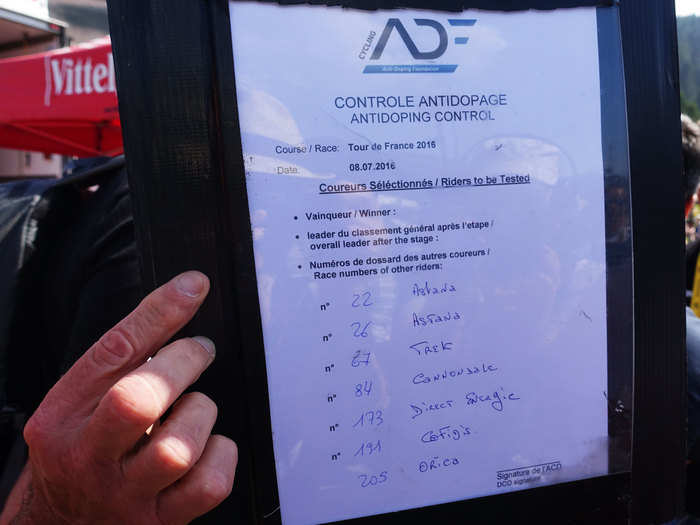
It isn't hard to figure out who's who as the riders' race numbers and names are public knowledge. A quick Google search will easily identify each rider.
The riders don't have to go directly to antidoping, so if they are asked to do a post-race press conference or wish to go to their team bus and clean up, they can do that — as long as they are with their assigned chaperone at all times.
The antidoping control is usually located just beyond the finish line.
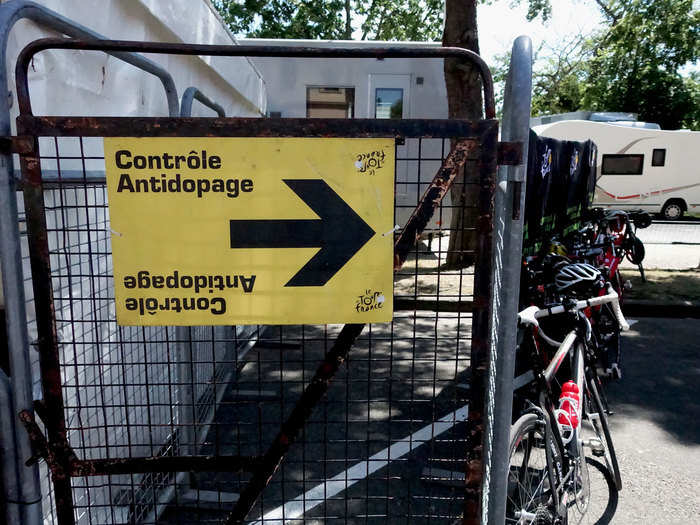
This is where the riders and team doctors or another staffer report. If there are other riders being tested, they have to wait in this area.
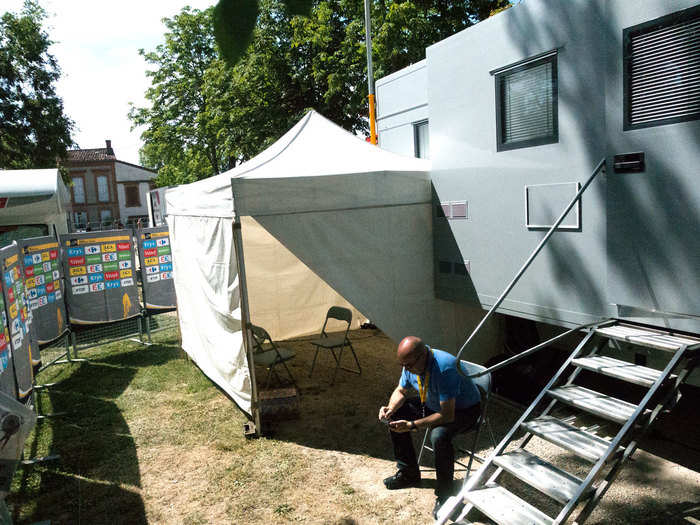
There are two different stations in the truck, so two riders can be tested at the same time. The truck was built when only a few rider were tested, so space inside is a bit tight.
On the day we visited the waiting area was a tent with a dirt floor.
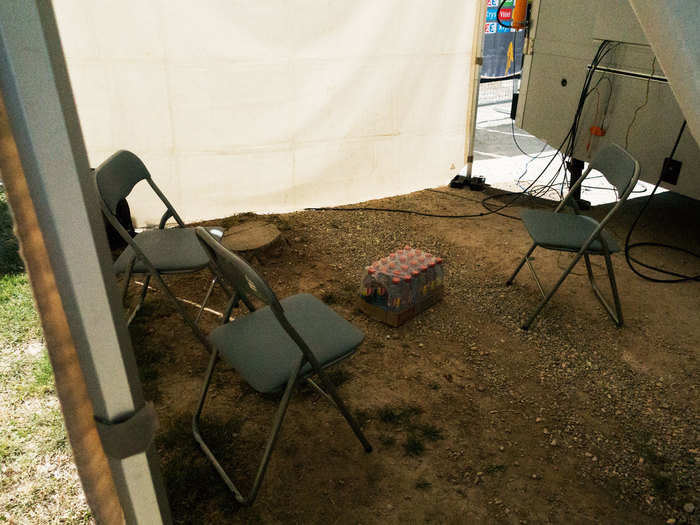
Water is provided and that's important, because if the riders are dehydrated after racing they won't be able to urinate, which means they might have to wait some time before they can provide samples — as long as a couple of hours. That could delay the team from driving to the next stage's start town and also delay plans for massage, dinner, and any number of things on the schedule.
Still, every rider I spoke said they understood why the tests were necessary.
Once inside the antidoping station, the rider first signs paperwork that says, among other tings, that he acknowledges that he is being tested and understands what will happen going forward with his samples and the lab analysis. The rider signs and gets a copy.
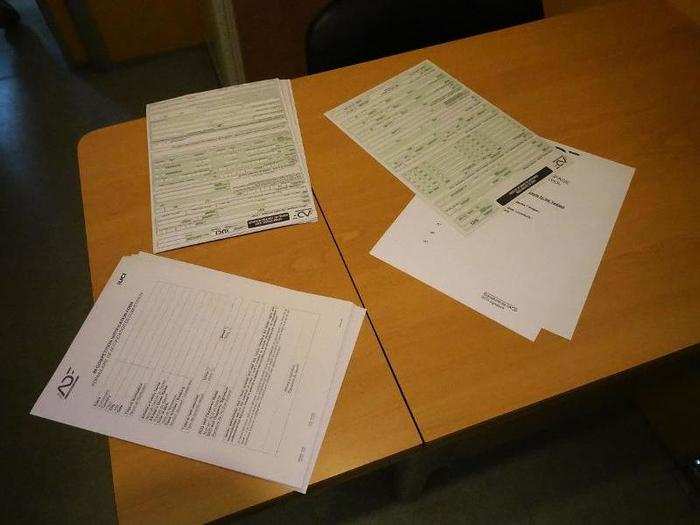
These days, a lot of the information is filled in beforehand, and so the rider often just signs his name and perhaps adds a few missing details.
The winner of the day's stage and the overall race leader are automatically tested, as well as six or seven additional riders.
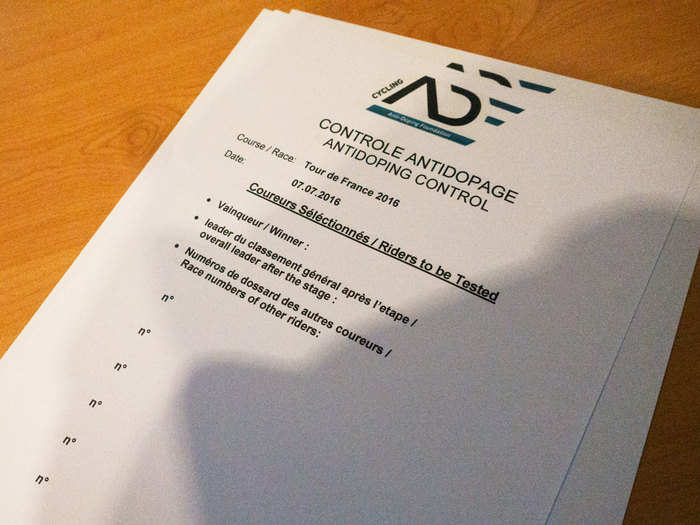
In the past, riders were mostly selected at random, but now the testing is a lot more structured, according to the CADF official I spoke with. Riders are chosen now based on different factors, including intelligence gathered from national cycling federations and other sources, a CADF representative said.
There was a TV showing the race live.
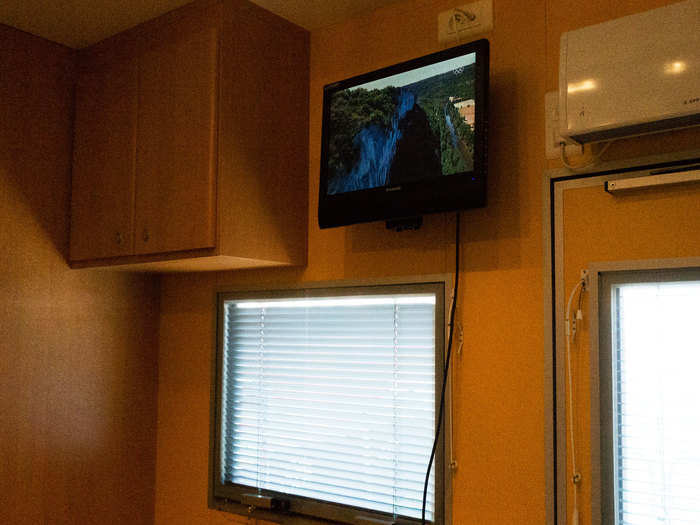
The white Styrofoam boxes are the testing kits.
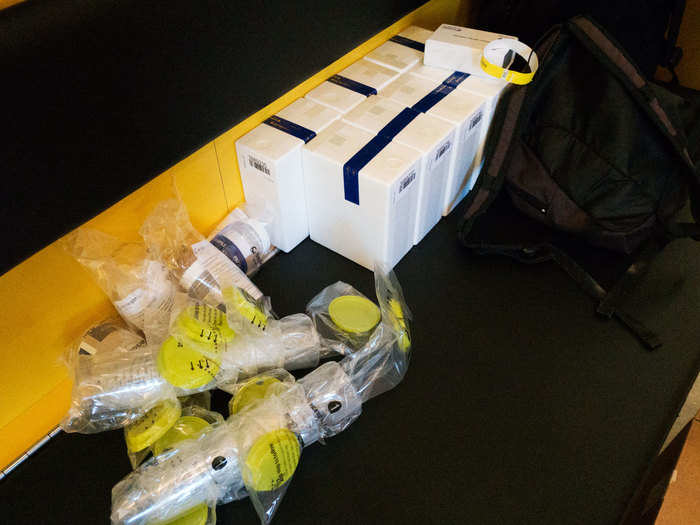
Each box contains two jars, for the A and B samples. The riders urinate into the plastic cups, or "collection vessels," and then pour that urine into the jars before finally sealing them.
These are the jars for the A and B samples.
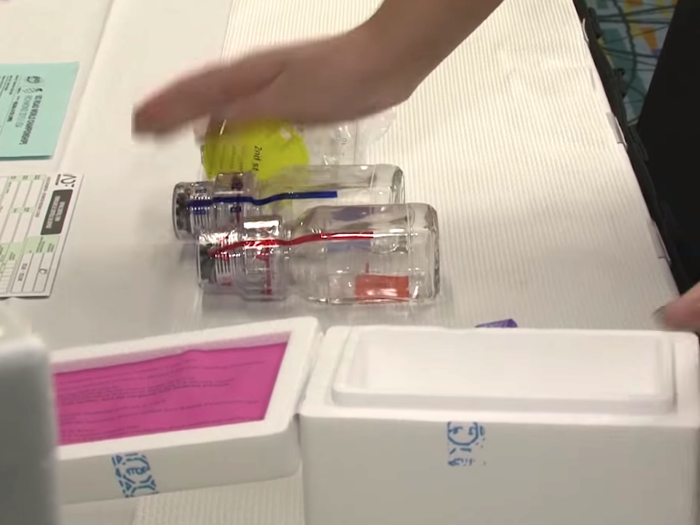
There are plenty of extra testing kits on hand.
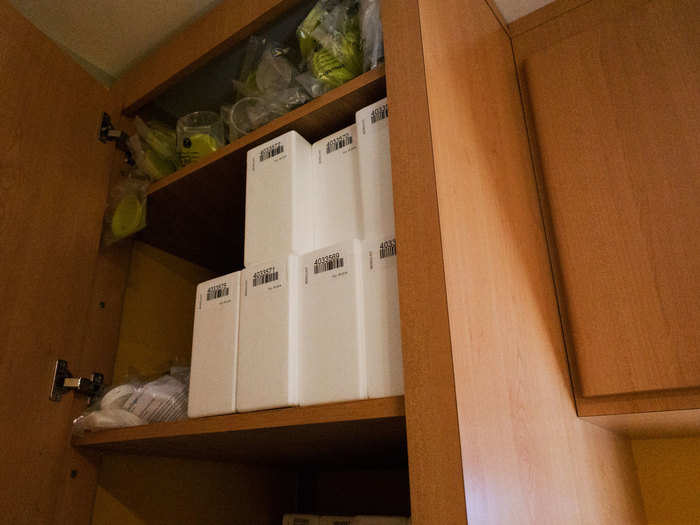
There is a refrigerator for storing the samples until a courier arrives — as well as bottles of water for all the riders who pass through.
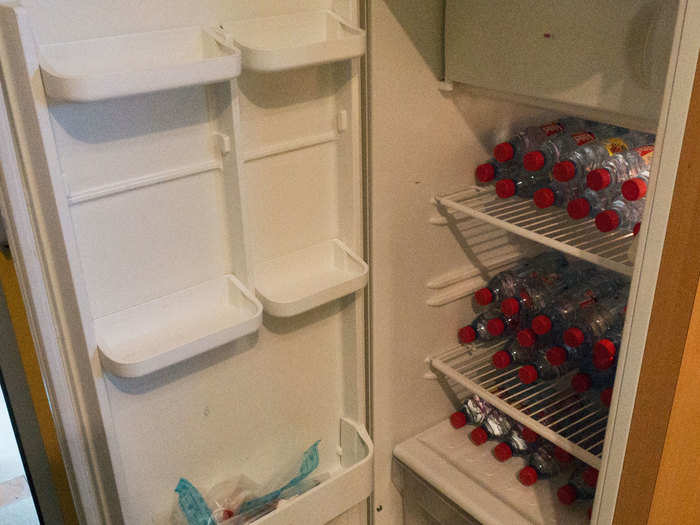
In the antidoping-control station, riders normally give just a urine sample. But the CADF may also draw blood samples. These are the materials used for taking blood samples.
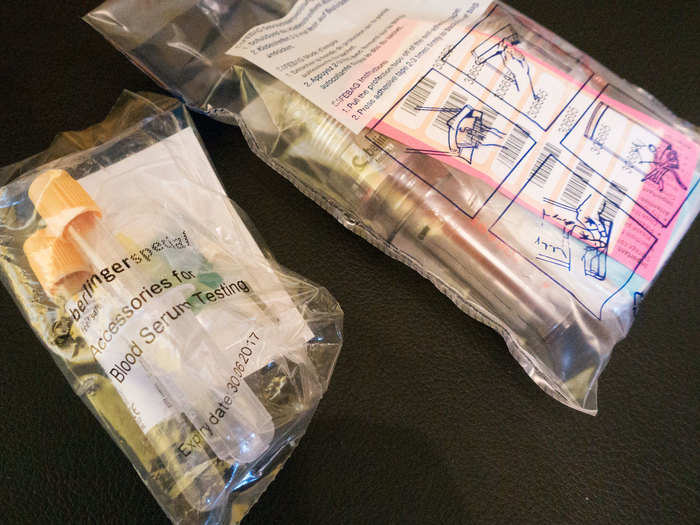
This is done for what's known as the biological passport, the purpose of which is to "monitor selected biological variables over time that indirectly reveal the effects of doping rather than attempting to detect the doping substance or method itself," according to WADA.
When officials want blood samples during stage races such as the Tour, they often go to the rider's hotel in the evening. During this Tour, CADF officials have already visited team hotels for additional testing.
The riders have to wash their hands before touching anything.
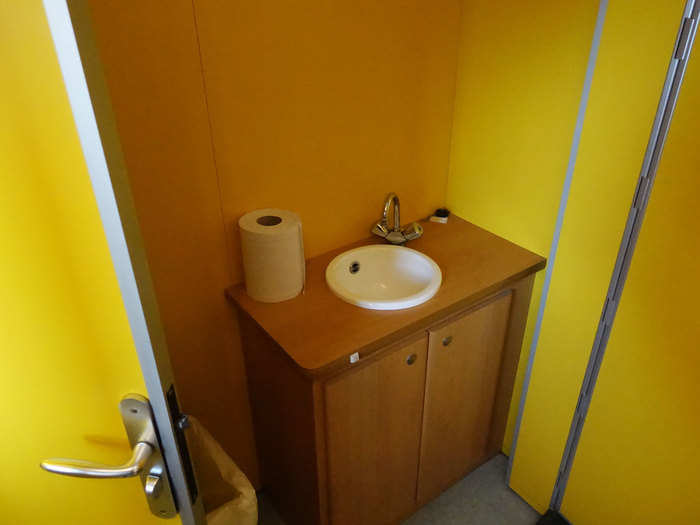
It helps ensure that they give a good sample. They are the only people allowed to handle the A and B sample vessels until they are sealed.
The riders urinate into a collection vessel.
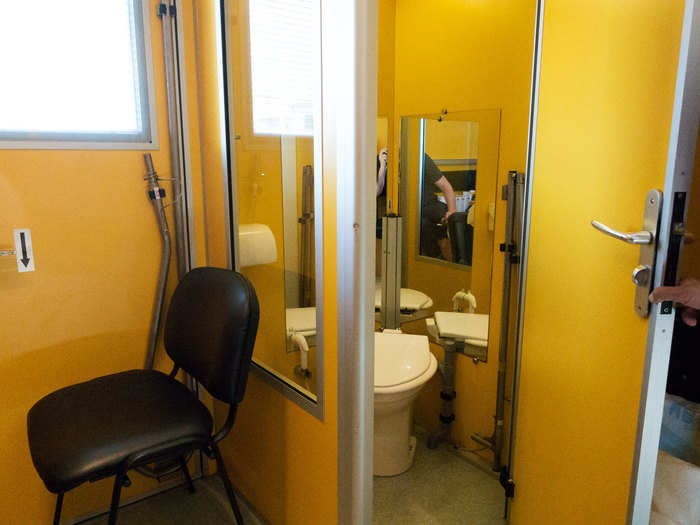
To ensure that a valid sample is taken and there is no cheating, an official from the CADF must watch the rider urinate, so he looks through the window on the left. There are two mirrors, which allow the testing official to see from different vantage points.
The whole process typically takes about 20 minutes, but that can vary a lot if the rider is unable to provide a sample right away. It is not uncommon for riders to take up to 2 hours to provide a sample.
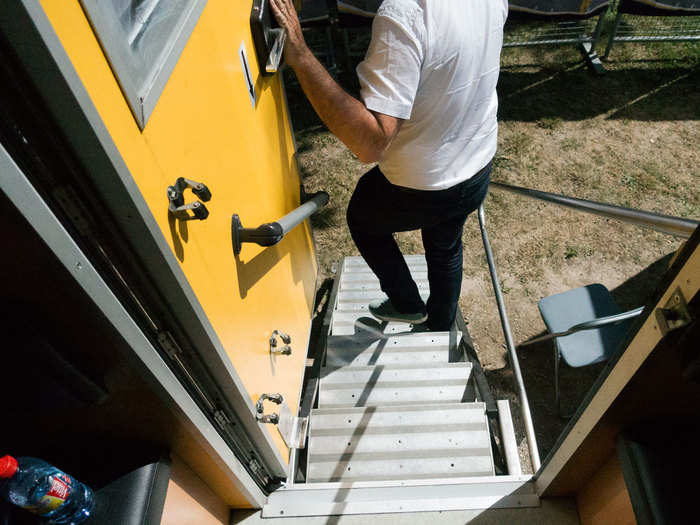
A courier who has worked for the Tour for years is in charge of transporting all the samples.
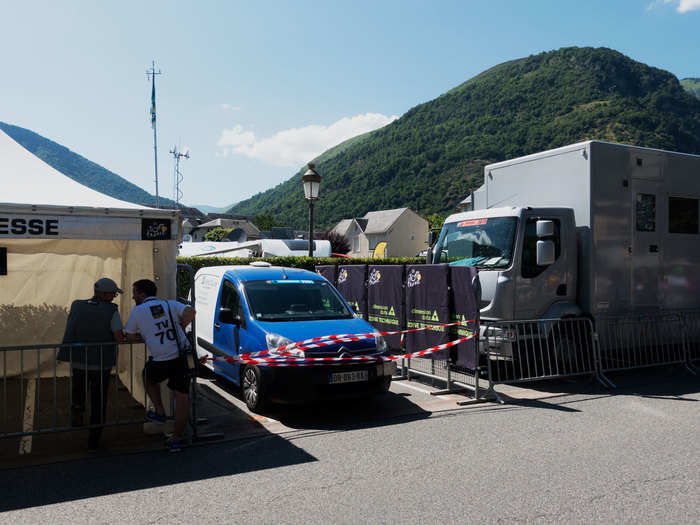
Each day after the samples are collected from the riders, the courier places them into a cool box, seals it in front of the CADF officials, and then drives directly to a lab in Paris. He does this every day, according to the CADF representative we met.
So each day the courier drives back to the Tour de France's next stage and does it all over again.
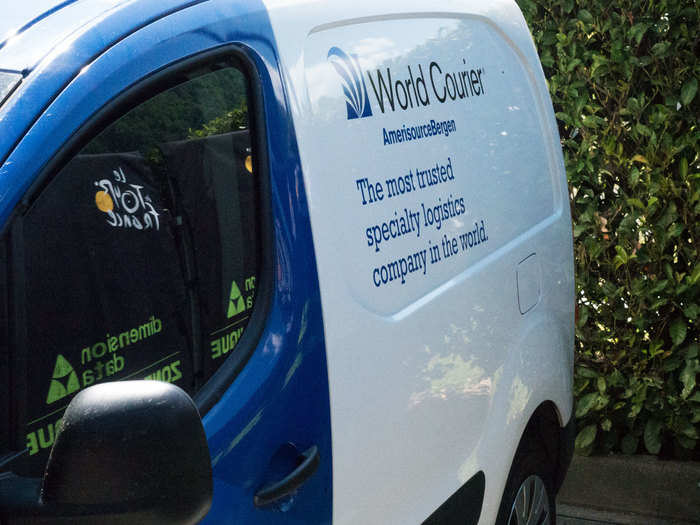
Sometimes the courier even gets a police escort, which opens the roads for faster travel. For smaller races, the turnaround time for the samples is longer, but for the Tour it's best that the samples are moved the same day, a CADF representative said.
Riders give two samples, an A and B sample. Should a rider's A sample test positive, he has the right to have the B sample tested.
8 cyclists are drug tested at the Tour de France every day - here's what happens
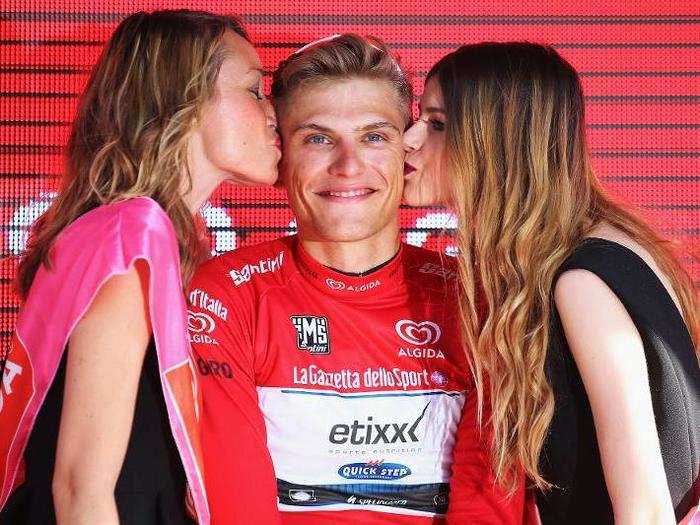
Popular Right Now
Advertisement